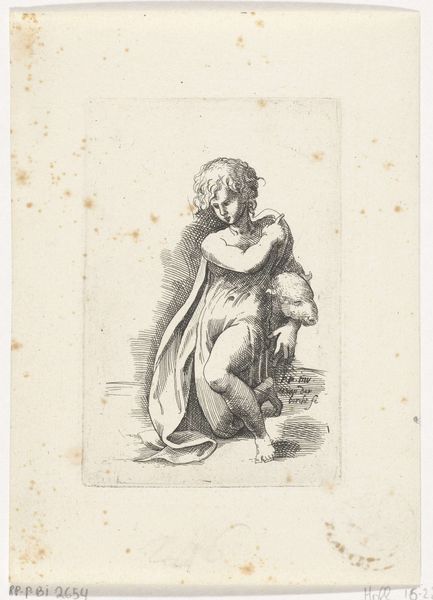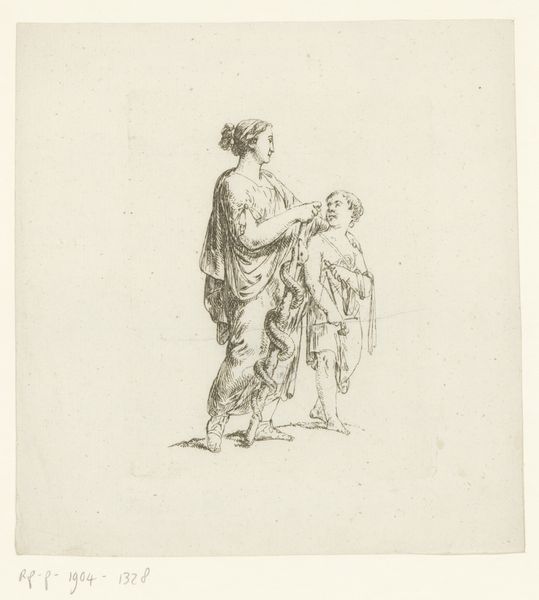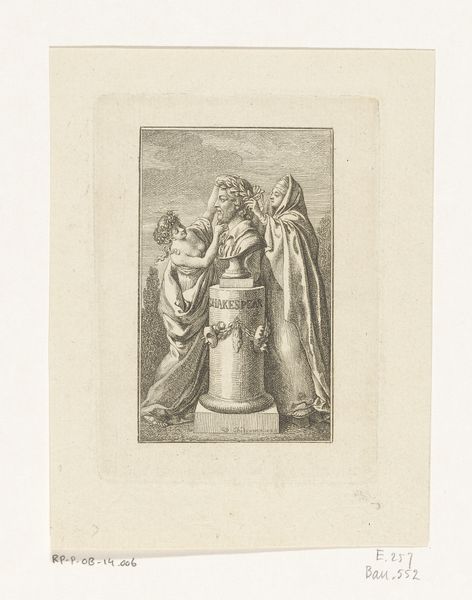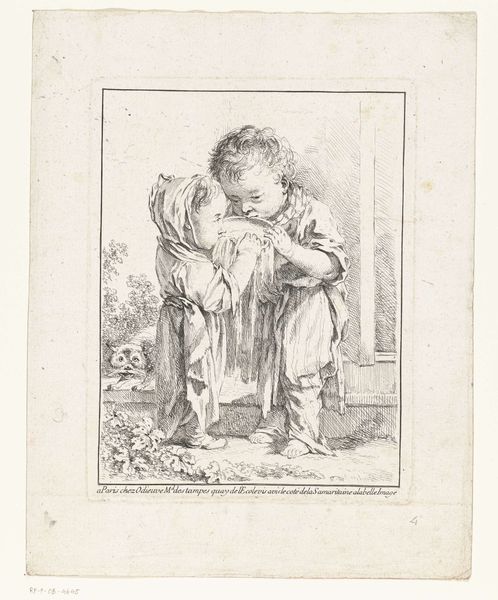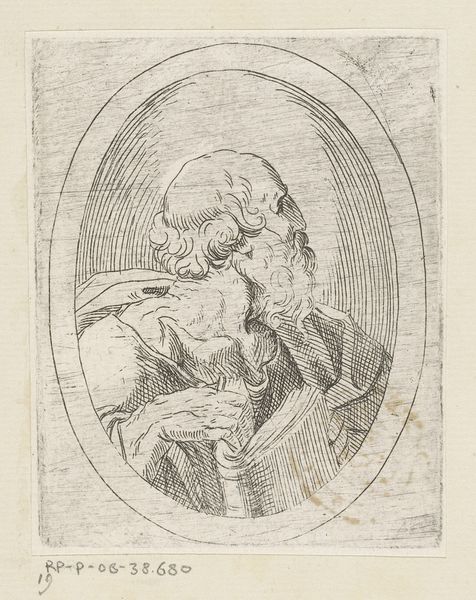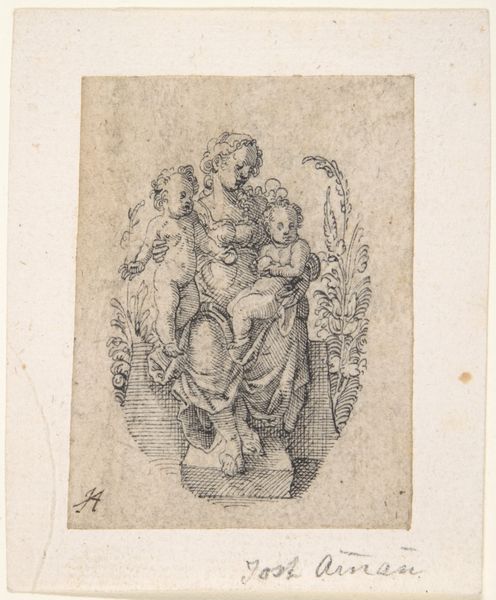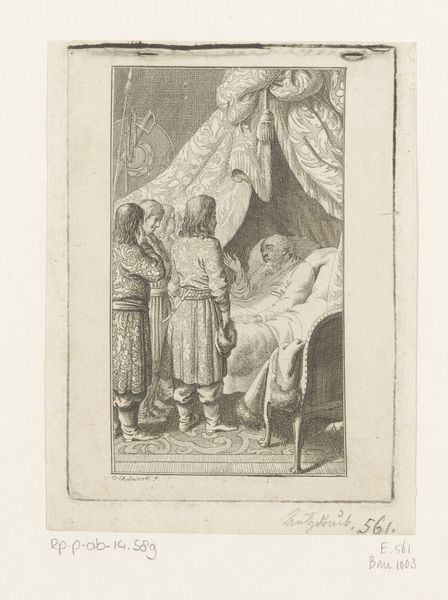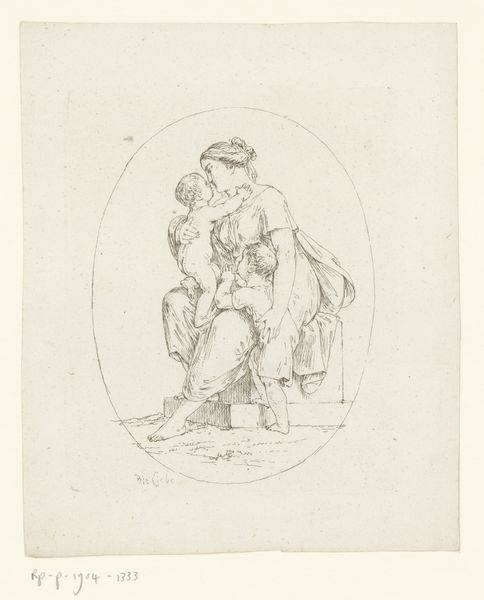
Dimensions: 3 1/4 x 2 3/8 in. (8.26 x 6.03 cm) (sheet, each, trimmed within platemark)
Copyright: Public Domain
Curator: Here we have a work entitled "Suite de sept petits croquis" by Francois Philippe Charpentier, dating back to 1766. It's a small print, a beautiful example of Baroque etching and ink drawing, now residing at the Minneapolis Institute of Art. Editor: Oh, look, a secret! It feels like peeking into someone's clandestine rendezvous. I'm drawn in by that air of hushed conspiracy; everything from the sepia tones to their huddled postures seems steeped in secrecy. Curator: The piece certainly conveys a sense of intimacy. In genre painting, figures frequently become stand-ins for various aspects of human nature, offering a stage to comment on society, morals, or shared beliefs. Think about what secrets people wanted or needed to hide during that period and what their attitudes about such subjects were. Editor: Maybe this is about forbidden knowledge. That finger pointed off-frame… it’s a gesture loaded with implied information, isn't it? As if he's directing the recipient towards a decision point or some unknown destiny, both fearful and inviting. Curator: Indeed. Baroque art often employs strong diagonals and theatrical gestures to engage the viewer emotionally. Charpentier uses figuration within that art-historical trend, where posture and expression aren't just aesthetic elements, but communicative signs—each angle suggesting volumes. The figures' exoticised garb perhaps nods to a curiosity for faraway lands, or an allegory regarding perceived notions of East meets West. Editor: Ah, right, I see. The clothing styles, while being a signal, also blur our clarity—they suggest that the characters might occupy both an imaginative place *and* historical reality, sort of like an alluring but inscrutable poem. What’s powerful here is the way he captures not the act itself, but the *feeling* of secretive transmission. Curator: Absolutely. Etching enabled a great deal of dissemination through print, democratizing art. By capturing subtle shifts in tone, he makes accessible commentary on human exchanges that often escape clear record, making such things present across the passage of time. Editor: I love how it is able to trigger my need for narrative; the scene teases you just enough so you end up providing the unwritten backstory yourself. Now that’s a collaboration that extends past the artist’s lifetime! Curator: Precisely. Hopefully, spending some time contemplating the artwork has given you new perspective on the relationship between observation, imagination, and interpretation. Editor: I’ll certainly be wondering about their whispers long after I've left this gallery! Thanks for opening my eyes to this work's visual dynamics and the stories it evokes.
Comments
No comments
Be the first to comment and join the conversation on the ultimate creative platform.

